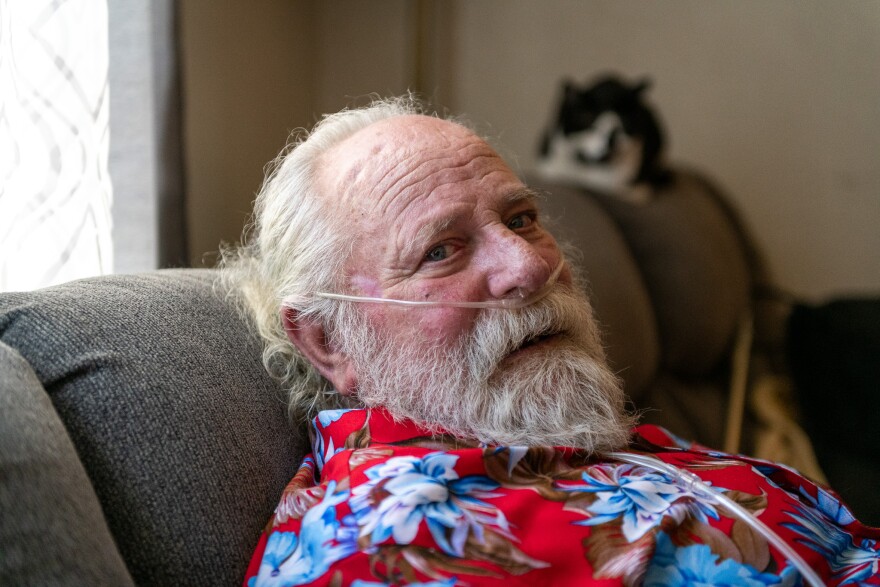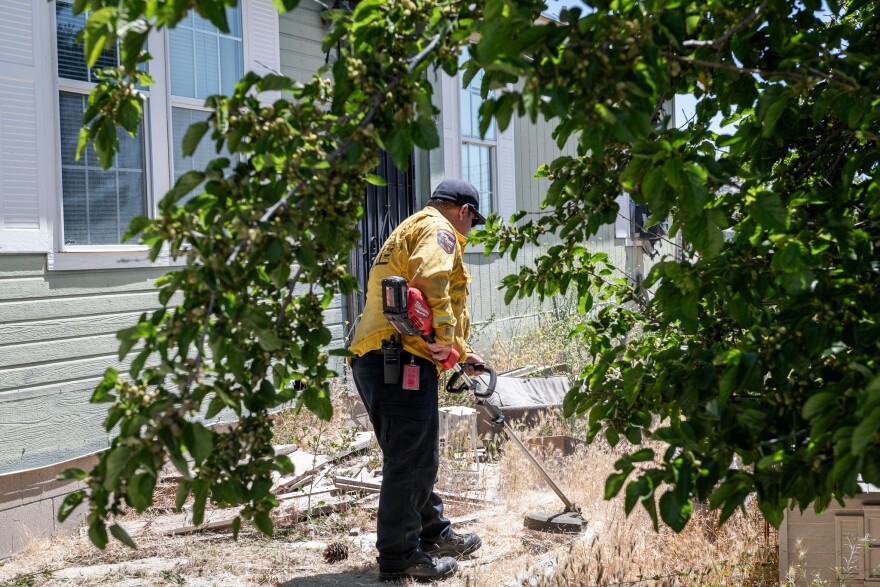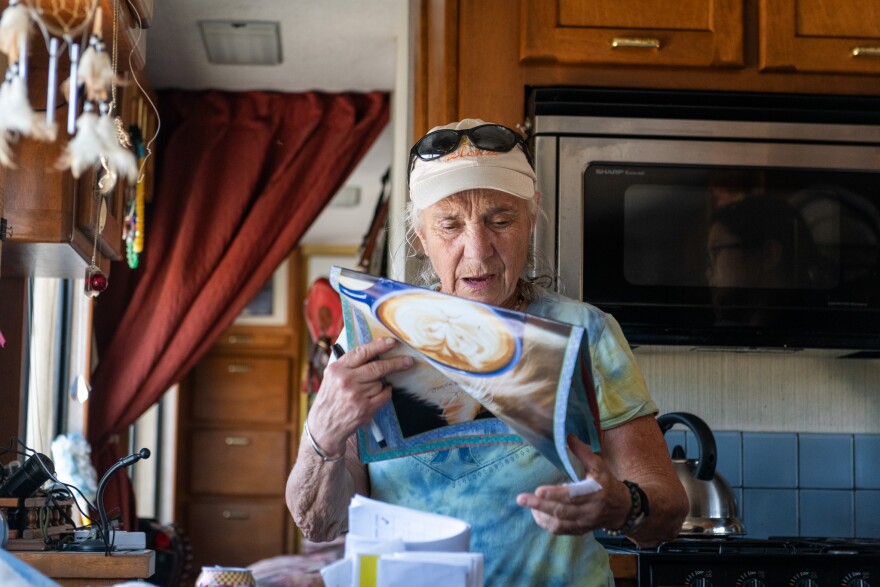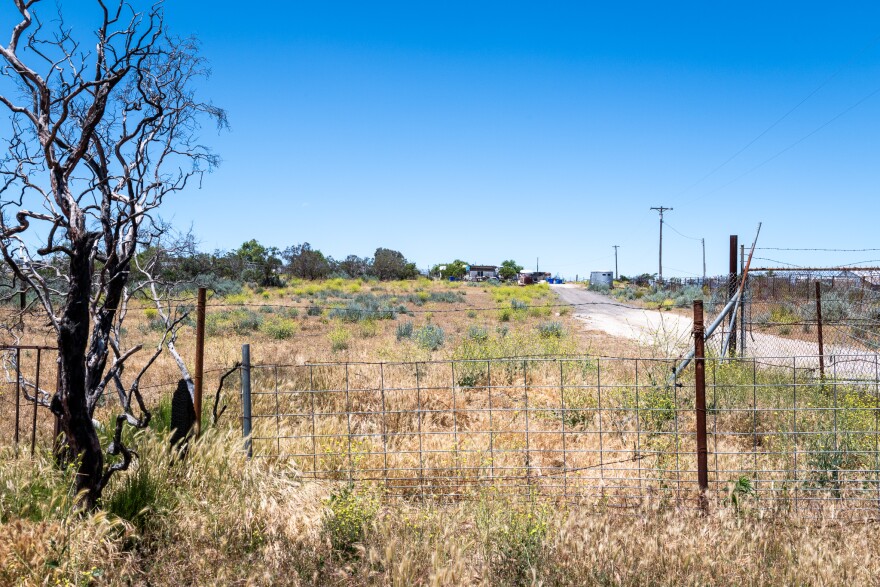On a recent Thursday morning, a team of nurses and a paramedic firefighter drove through dusty unpaved roads to visit Michael Lane, a patient who was recently discharged from Sharp Grossmont Hospital.
Lane, 69, is a retired ironworker. He suffers from chronic obstructive pulmonary disease and went to the emergency room because he was having troubling breathing.
He’s been living in Boulevard, a community of 350 people, for more than 25 years. This is his first check-up since leaving the hospital.

“It’s really hard to get people up here other than on our phone. That’s a hard thing to do — diagnose someone over the phone,” Lane said.
The visit is part of the pilot Rural Health Discharge Program intended to reduce hospital readmission rates. San Diego County public health nurses and firefighters support residents in the county's most rural areas. The team monitors patients for up to 30 days after they leave the hospital to manage conditions and resolve issues at home.
Over the past five years, Sharp Grossmont Hospital said readmission rates for patients from rural areas of San Diego County increased by nearly 8%.
Lane said having the team drive more than 55 miles to check in on him is making a big difference in his recovery.
While nurse Amy Dull checked his vitals, fire captain Joseph Thompson cranked up the weed trimmer and cleared the front yard to ensure Lane's safety and prevent falls.

The free program launched last June. It's a collaboration between several health care organizations, the fire department and the county's Health and Human Services Agency.
To qualify, patients must have been recently released from Sharp Grossmont Hospital and reside in one of nine rural zip codes, including Boulevard, Campo, Descanso, Guatay, Jacumba, Pine Valley, Potrero and Tecate.
“We talk to them on the phone at first and get some background and introduce ourselves from the program," Dull said. Dull is one of three nurses in the program. "And then that first visit is just really getting to know them and their needs and kind of an overall picture of their health and what their situation is.”
Susan Costanzo is 68 and lives off the grid in Campo. This is the first time she’s meeting the team.
A small blister on her hand got infected and she wound up in the hospital for five days.
“It’s nice that they follow up with people discharged from the hospital. People need that, especially if they live alone,” Costanzo said.
She works her land and her only companions are her two dogs.
They replaced her fire alarms and gave her a new blood pressure monitor.

Nurse Claudinne Urbanavage went over her medication and helped her set up follow-up appointments.
“The people here sometimes, they don't have primary care doctors. They don't have a pharmacy. So that's when we come in. We make sure that they stay out of the hospital,” Urbanavage said.
The team can only see about four to five patients each day due to distance between homes. Since June, they have visited 150 people and driven about 10,000 miles.
The patients' circumstances vary, Urbanavage said.
“From someone who has a nice home to someone who has a trailer, which is falling apart, has holes in their roof where they can't even sleep in there when it's raining. The youngest that we've had is 27 and the oldest is 96,” she said.
Residents in rural areas face difficulties accessing health care. There are fewer health care resources and longer travel times to hospitals and pharmacies.
“The people who live in the rural areas are underserved. And until you're actually out here and seeing exactly what that looks like and how it affects them, you don't realize how important it is,” said nurse Kaila Domingo.
Some of the patients live 50 to 60 miles away from the nearest hospital, said Nick Johnson, one of two fire captain paramedics assigned to the program.
“Many of the people that we see do not even have transportation or access to transportation. There are a lot of issues, too, where there are just no one for these people to call other than 911,” Johnson said.

According to Sharp's data, about 40% of eligible discharged patients have enrolled in the program. The majority are managing chronic diseases.
In the first six months, patients in the program had fewer trips back to the hospital — just 4%, compared to almost 14% for those who didn't enroll.
Juan Cuevas is 79 and lives in Potrero with his daughter. He went to the hospital because of an enlarged prostate. Today is his last visit.
“I’m very grateful for their help and the new smoke detector,” he said in Spanish.
Urbanavage said a lot of the patients they visit are isolated.
“Sometimes they just really need someone to be there for them, someone to sit and talk to them. And that makes their day,” she said.
Cuevas was feeling better — enough to sing to the team a Spanish love ballad as they left.






